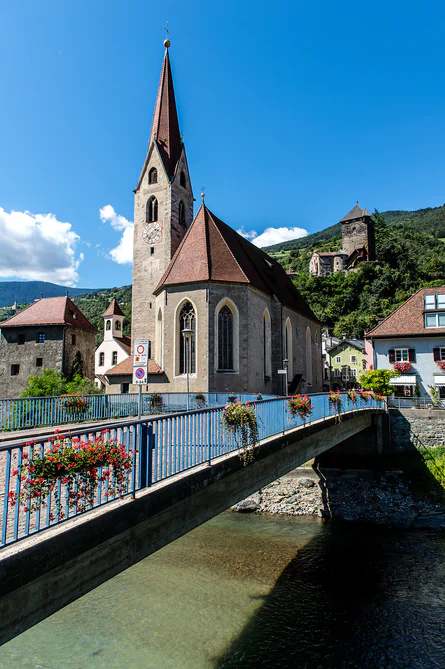Located on the Passer Promenade, it was built between 1883 and 1885 in a neo-Gothic style. The church belongs to the Evangelical Lutheran Church in Italy and is a true symbol. Particularly notable is the large Christ figure, blessing the faithful – a masterpiece made of Laas marble, inspired by Bertel Thorvaldsen’s statue.
The construction of the church is closely tied to the development of Merano as a spa town. As early as 1861, the first members of the Evangelical community began to organise in the city. In 1870, the first pastor was appointed, and in 1876 the Evangelical community of Merano was established as part of the Evangelical Church A.B. in Austria. This open, cosmopolitan atmosphere is still very much present in Merano today – the city has preserved its welcoming spirit over the centuries.
The building itself is steeped in a unique atmosphere. It sits amidst an idyllic garden and is crowned by a striking spire. The exterior walls are a true masterpiece of neo-Gothic architecture, with intricate flying buttresses and pointed windows. The interior is kept simple, offering plenty of space for reflection and prayer. Noteworthy are the wooden reliefs of the altar and pulpit, created by Franz Xaver Pendl, as well as the impressive crucifix.
The Christ Church is not just a place of worship but also a cultural meeting point. Regular sacred music concerts and organ performances take place here, and those strolling along the Passer Promenade can often feel as though they have been transported to another country. The atmosphere of the garden, the imposing building, and the harmony between nature and architecture make the Evangelical Christ Church a truly special destination for anyone visiting Merano.
Merano, with its cosmopolitan character, invites people to explore different cultures and religions. The Christ Church stands as an extraordinary testament to this unique heritage and is a place that reflects both the faith and the diversity of life in Merano.























































































